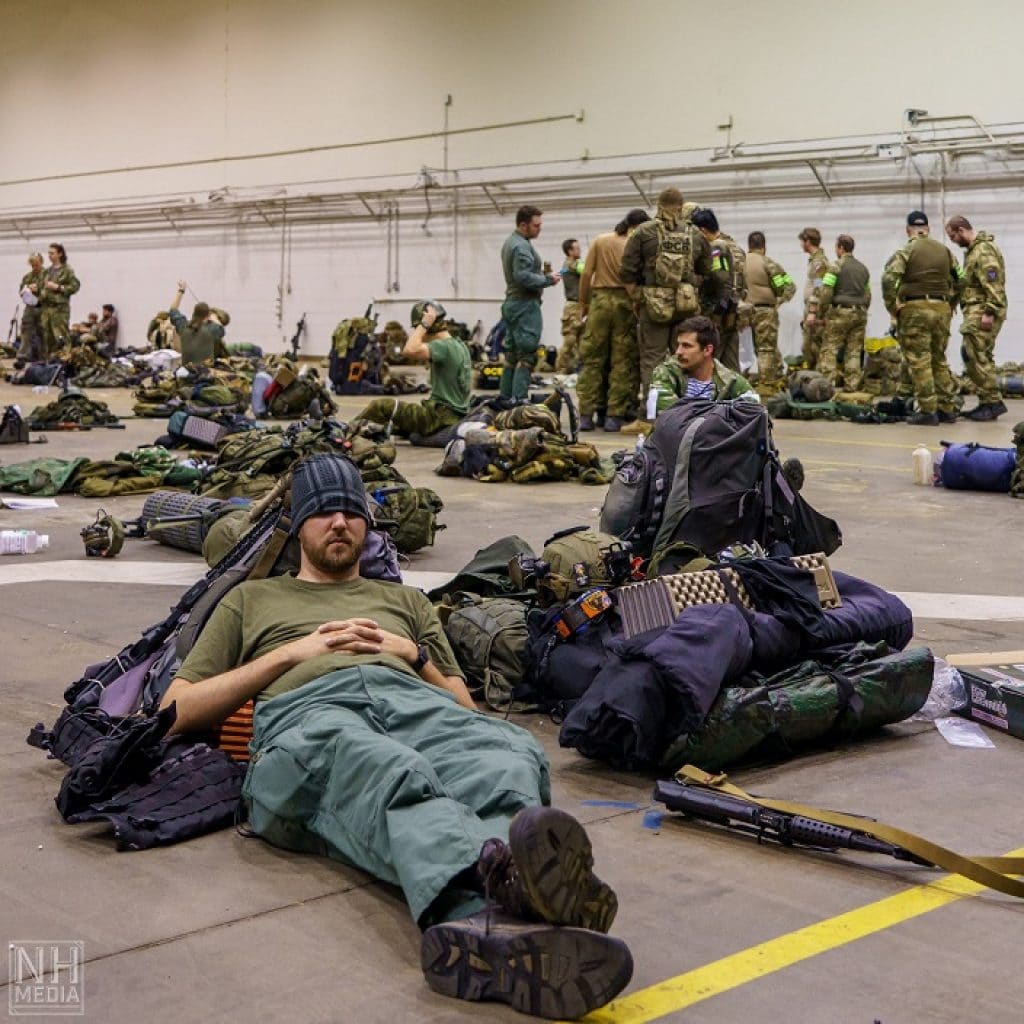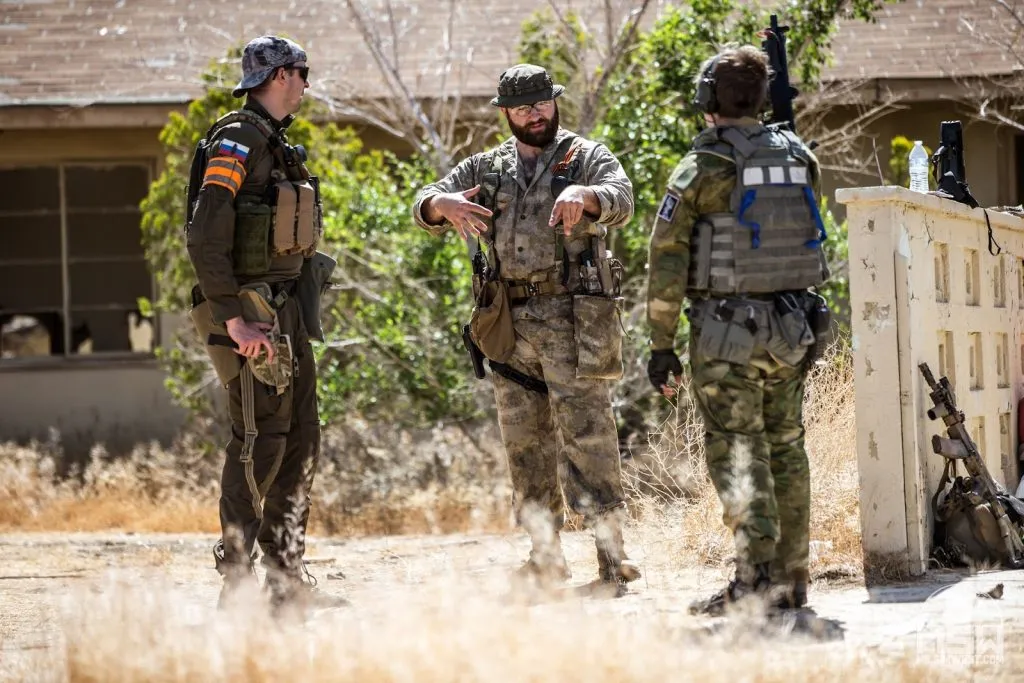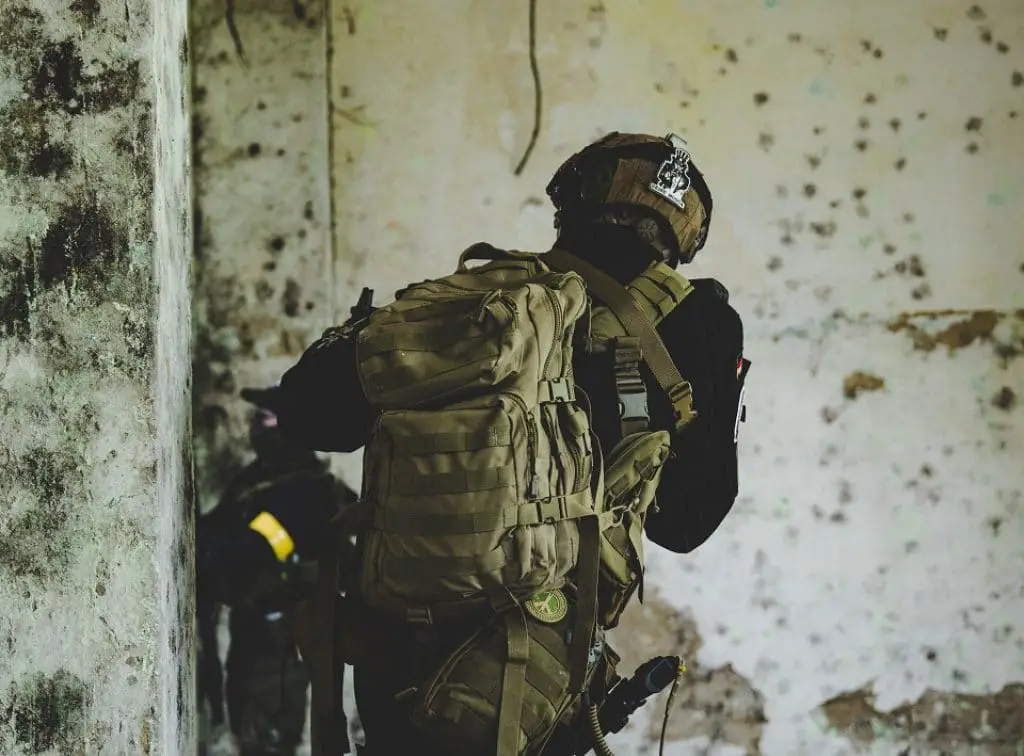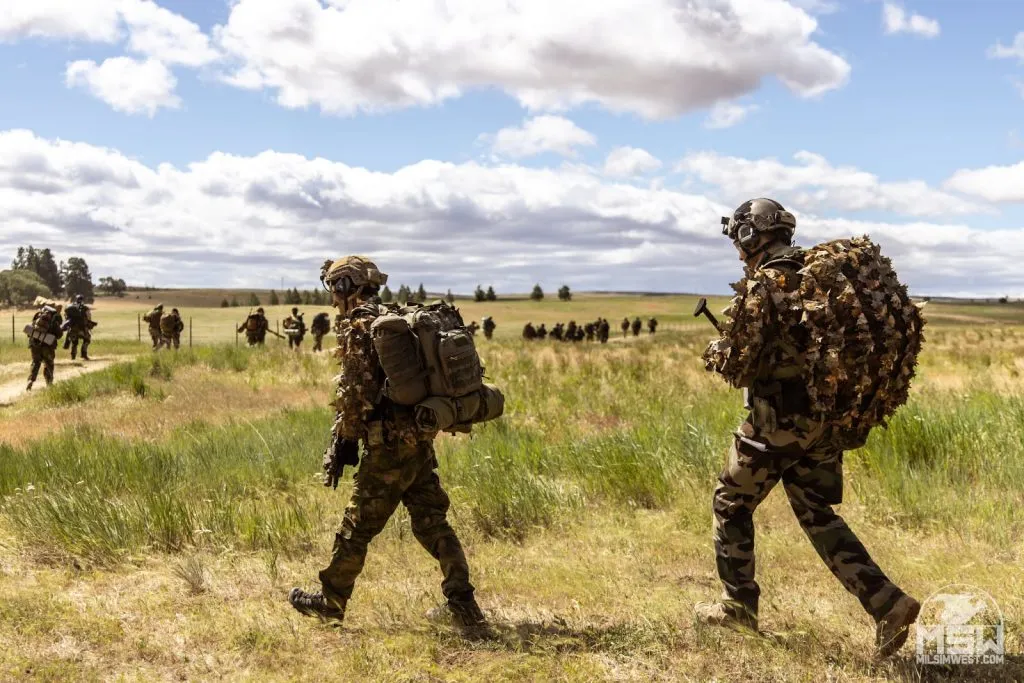How to prepare & pack for a Milsim event
Learning how to pack for a milsim event is both difficult, and not.
So, you’ve learned what is MILSIM and you want to participate. You will end up asking yourself, what should I pack? What should I do to best prepare?
Generally, these events can last a long time, which can sometimes mean days or, in exceptional cases, even weeks. Let’s see how to adequately get prepared to take part in a MILSIM event. You will learn:
- How to pack for a Milsim Event
- How to mentally prepare for a Milsim Event
- How to physically prepare for a Milsim Event


Your Gear List – AKA the easy stuff
This is the meat of how to pack for a Milsim event:
Making a list of the equipment needed to deal with this type of event is not easy at all: the type and amount of gear to bring with you hardly depend on the role you are going to play. Nevertheless, it is generally good practice to bring some basic gear with you:
How to pack for a Milsim Event: Basic Gear
- Water and food rations: being long-duration events, it is always a good idea to have some rations with you to stay hydrated and “recharge your batteries”. Depending on your food choices, you may need a way to heat it up as well.
- Mess kit: how did you plan to eat your meals? Pack utensils, cups, and bowls if needed.
- Lenses for different types of glasses: operating for long periods, it is possible that you will have to operate in different brightness conditions. Better not to find yourself with dark glasses when the sun goes down.
- Extra clothes: what is true for light conditions is also true for weather conditions. It is best to have some dry clothes, waterproof equipment, and spare underwear with you. Finding yourself operating in wet, broken, or otherwise compromised clothing for long periods can easily become a serious problem. A more comprehensive list looks like this:
- Additional base layers like thermals pants or shirts
- Spare socks & underwear
- Cold weather layers
- Head wear
- A weather-resistant bag to keep all of this in.
- Medicines and medikits: If you are away from civilization for long periods of time, make sure you have all the medicines you normally need, plus a small medikit for yourself and your teammates. This medkit may include bugsprays and wet wipes as well.
- Extra batteries: having extra batteries with you can always come in handy: dots, flashlights, radios, AEGs… a lot of our equipment runs on batteries.
- Utility knife and tapes: they always come in handy. They can be used for modifications, adjustments and emergency repairs. Tapes include: fast “duct” tape and electric tape.
- Identification: this includes your photo ID and any medical cards.

How to pack for a Milsim Event: Auxillary Gear
For all the rest of the equipment, as already mentioned, use common sense, and adjust according to the needs of the operation and the role you are going to play. Always carry safety equipment (goggles, red light, whistle, emergency blanket, and medkit), and rely on your role to decide the rest.
Milsim West is considered one of the most rigorous Milsim events out there. Check out our guide on “preparing for the suck” aka how to pack for a Milsim West event.

Mental Preparation:
Most MILSIM events have an average duration of around 24 / 72 hours. This means that for the whole duration of the event, you will play a defined airsoft role.
Now, the heart of the simulation is the correct impersonation of your role: this means in the first place that you have to understand what you are going to do.
The first thing to do is consult the book of the event (like the Milsim West TACSOP). Review the briefings reserved for your team or your category of players. This will provide you with the basic knowledge to understand what role you’re going to play, and in what context. This is essential to structure your identity. This also helps to establish the behavioral lines to keep during the event.
Get comfortable with roleplaying
Let’s use the example of roleplaying a member of a SWAT team. You will need to consider that you must adhere to the chain of command of your unit. Think about what kind of equipment you will have to use, and learn about the rules of engagements.
You will have to try to think, as much as possible, as an officer in this situation.
It will be logical to ask yourself questions such as: “If I shoot someone, will I be subject to consequences? If I disobey an order, will something happen to me? What about my comrades?” and so on.
Similarly, if you were to play as a narco / gang member, you would have to assess the situation. Have I decided to surrender? If so, what am I risking? Have I decided to commit crime by choice or am I forced against my will? What do I risk if I am caught collaborating with the police? And if I torture someone, what happens?
In short, the rule is, “If I were in this situation, what would I do?”
The hardest thing to do is to give an honest answer to that question. It requires a lot of practice.

Physical Preparation:
In Milsim, the type of tasks to be performed and roles that you play will require different levels of physical effort. That said, you should expect to be physical if you truly wish to be proficient.
More physical fitness decreases stress and ensures you can perform while on the field.
You should be prepared for the following types of situations:
- Common situations – regardless of the type of role you take, you should expect to patrol or even simply stand for long periods. It may seem trivial, but these are things that not everyone is used to.
- Frequent situations – in some cases, greater physical efforts may be required. It may be that you have to carry ballasts, walk long distances, load and unload equipment, or sprint from cover to cover. Most good airsoft tactics require some degree of physical fitness.
- Borderline situations – there are also cases in which even higher physical efforts are required. Walking continuously for many hours and with heavy loads, perhaps with only a few hours of sleep, climbing slopes, crawling for long distances, running, and carrying heavy weights. These tasks tend to be performed by those who impersonate raiders and special forces operators, or in any case roles of personnel who must operate autonomously and perform extremely difficult tasks.
To prepare for these types of events, it is best to start as soon as you decide to participate.
Some exercises that may come in handy:
- Running: sprinting is a type of skill that can be very useful in the most adrenaline-filled moments of the simulations. Knowing how to move quickly from cover to cover can sometimes make the difference between success and failure.
- Marching: marching, also known as rucking, for long periods and with more or less heavy loads can certainly be useful. It is very common among all units and can be very tiring, if you are not accustomed. You can vary a lot on the weight, depending on the type of role to play, but as general rule, it would be good to get used to facing distances of several tens of kilometers, on slopes.
- Cardio: jumping rope, jumping jacks, jogging, and similar exercises are essential to understand how to react to fatigue. It can also increase awareness of your limits and improve your breathing for crucial shots.
- Pull-ups: in some situations, you may have to climb over obstacles or structures. Being able to lift yourself is a good starting point to succeed in these tasks without losing the ability to operate. A good base can be 5 pull-ups, but ideally, you should be able to lift yourself with some weight on you (10 kilos is a good goal);
- Plank and movement on all fours: Going prone and crawling is another situation that isn’t uncommon. In some cases, you may need to move while staying low and you need to have good core strength to do so. You can try crawling for some distance using the belly-crawl technique.
- Use of the rifle: often, one of the first things that players experience, is the pain in the shoulders and arms, due to the continuous use of the airsoft gun. The most convenient thing is to get used to brandishing the rifle for a long time, possibly trying to carry it with you for a long time, even at home. Often, by keeping the gun with you for a long time, you will also discover ways to carry it with as little fatigue as possible, maximizing the effectiveness of your training. If you want to give extra value to your training, try to carry a heavier weapon than the one you are going to use, so that you will find it easier in the actual operating conditions.
These are some of the exercises that I think can best prepare someone to withstand the stress of this type of event.
This is a non-exhaustive list, based on my personal experience alone. It will certainly be best to consult an expert in athletic training.
The golden rule is “always be in shape, and intensify preparation around events”.
It goes without saying that if a person is out of shape, 3 weeks will not prepare him. Even a physically fit person will find these MILSIM events quite demanding.
Conclusion
Hopefully, you’ve found this useful in helping you learn how to pack for a MILSIM event. It is worth knowing that each event is going to vary in intensity.
So, it might help to ask other players, who have attended previous events, how their experience went and what they recommend to pack.
FAQ
What is the most important thing to get properly prepared?
Aside from the safety of the players; the fundamental thing for MILSIM is to get into character. The simulation finds its essence in the search for realism. So, it is crucial to try to recreate realistic situations as accurately as possible.
I’m not in good shape and I don’t have time to train. Can I still join a MILSIM event?
Yes, you can. In many cases, even in less than excellent physical condition you can participate in these events.
However, keep in mind that a chain is only as strong as its weakest link. Poor performance can affect the success of your team’s actions as well as your own. Being able to join the simulation doesn’t mean it will be easy.
Make sure to consider the physical demands of the event you want to attend and the specific role you will be playing.
I’m still not sure what to bring with me. How can I get a better idea?
To get a better idea, read the book of the simulation, and understand in depth what role you have to play. Try to imagine in which situations you are most likely to find yourself.
Then think about the most likely contingencies, and try to equip yourself to deal with them as best you can.
Finally, you can look for information about the typical equipment, appearance, and procedures of the personnel of the faction you’re going to play. After all, they do this for a living, so who better to know what to bring and what not to!
As a final piece of advice, I suggest limiting your overall equipment load as much as possible and mind the weight you’re adding.
Given their duration, these events can be very tiring, and carrying a too heavy load for too long can slow you down, affect your operational capabilities, or even get you injured.
So choose carefully, stay safe and have fun!
The post How to prepare & pack for a Milsim event appeared first on Airsoft Core.
Original post here: How to prepare & pack for a Milsim event
Comments
Post a Comment